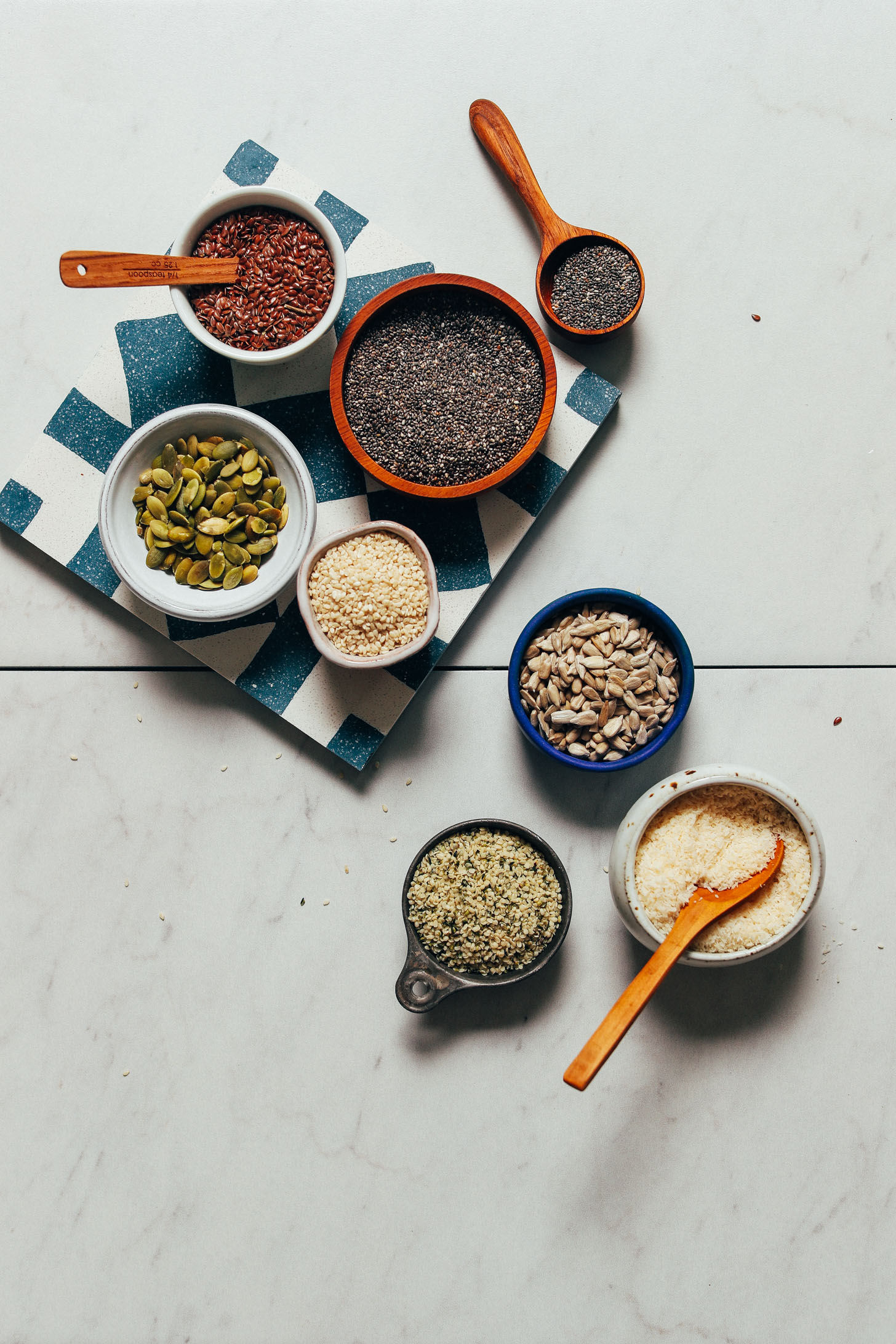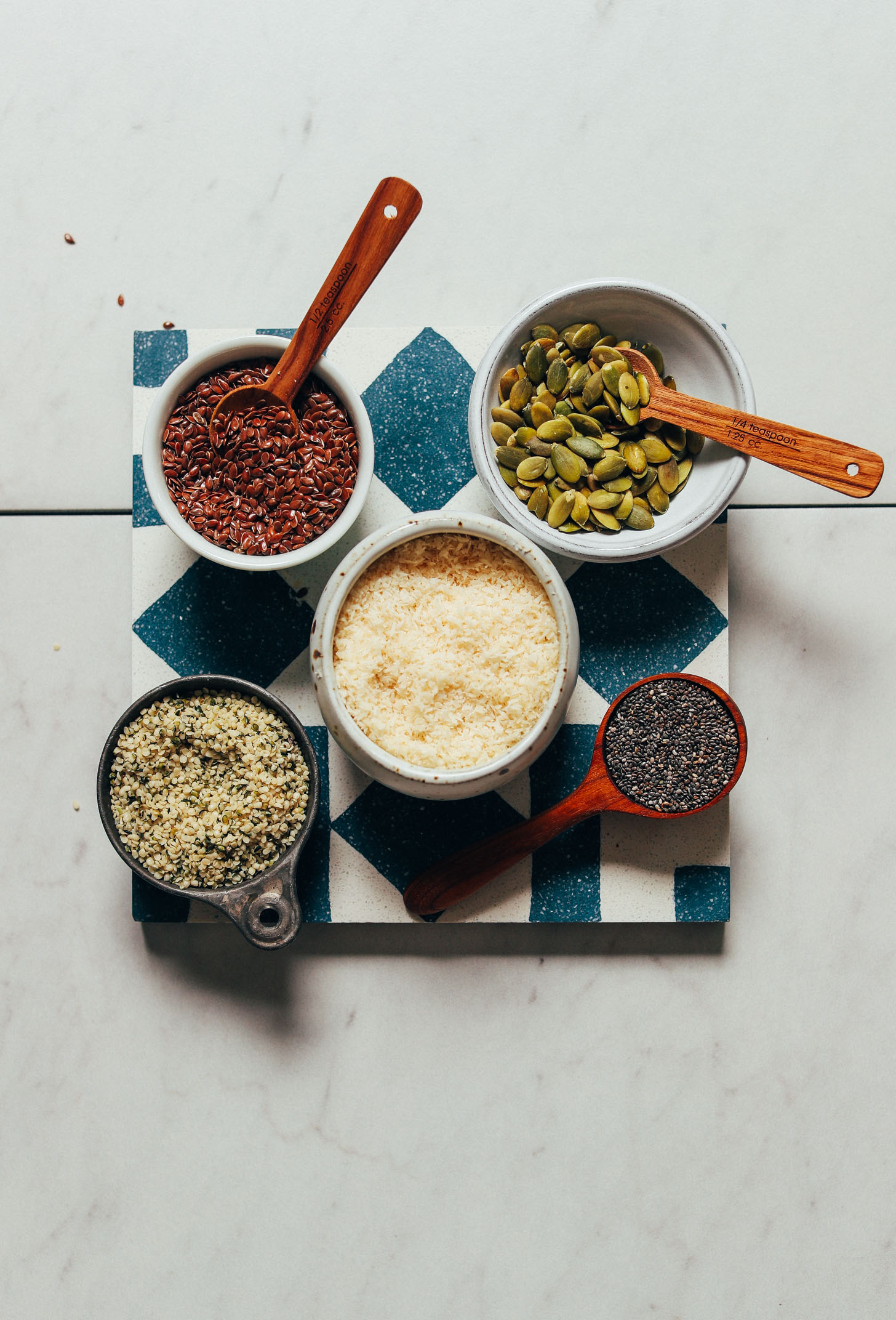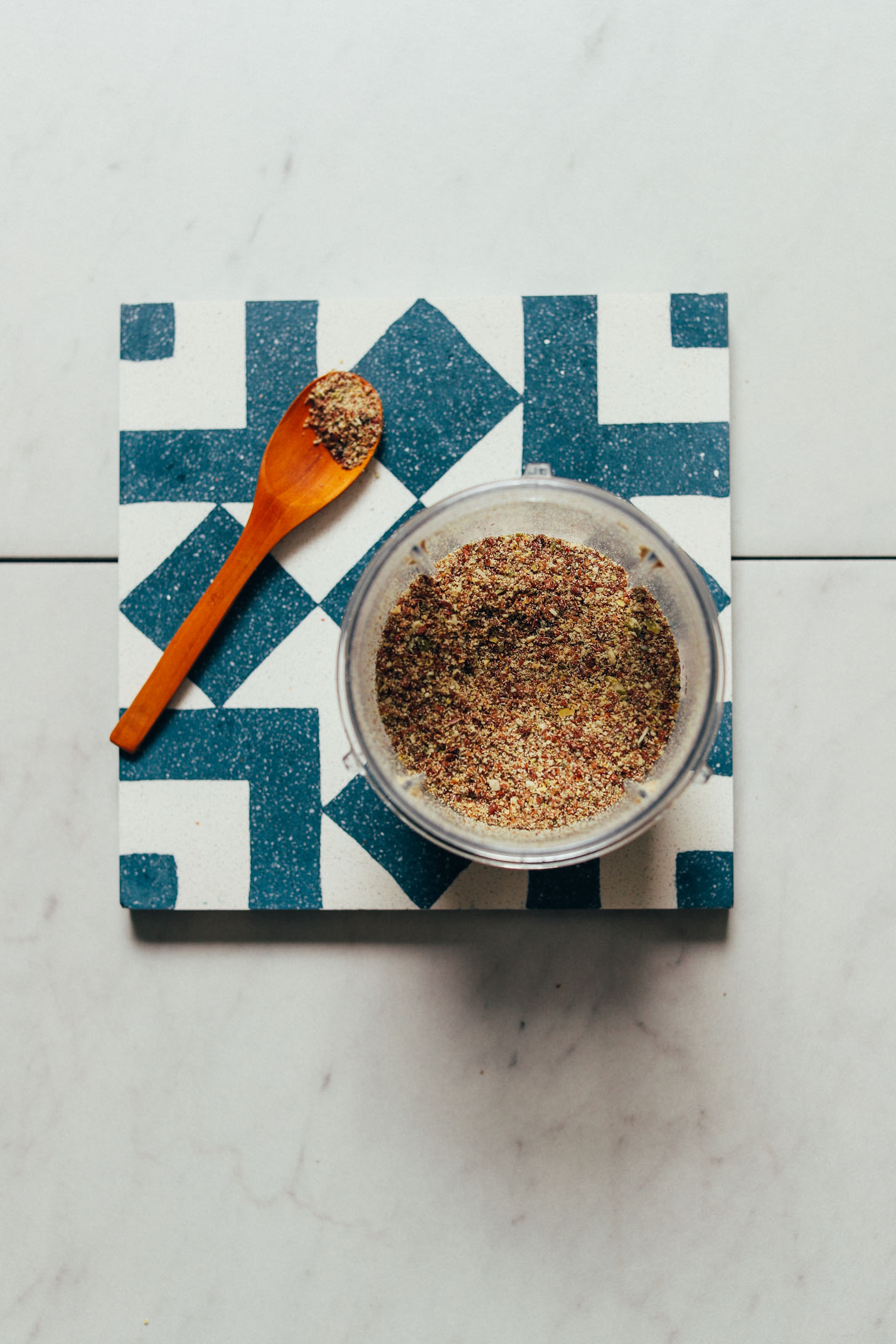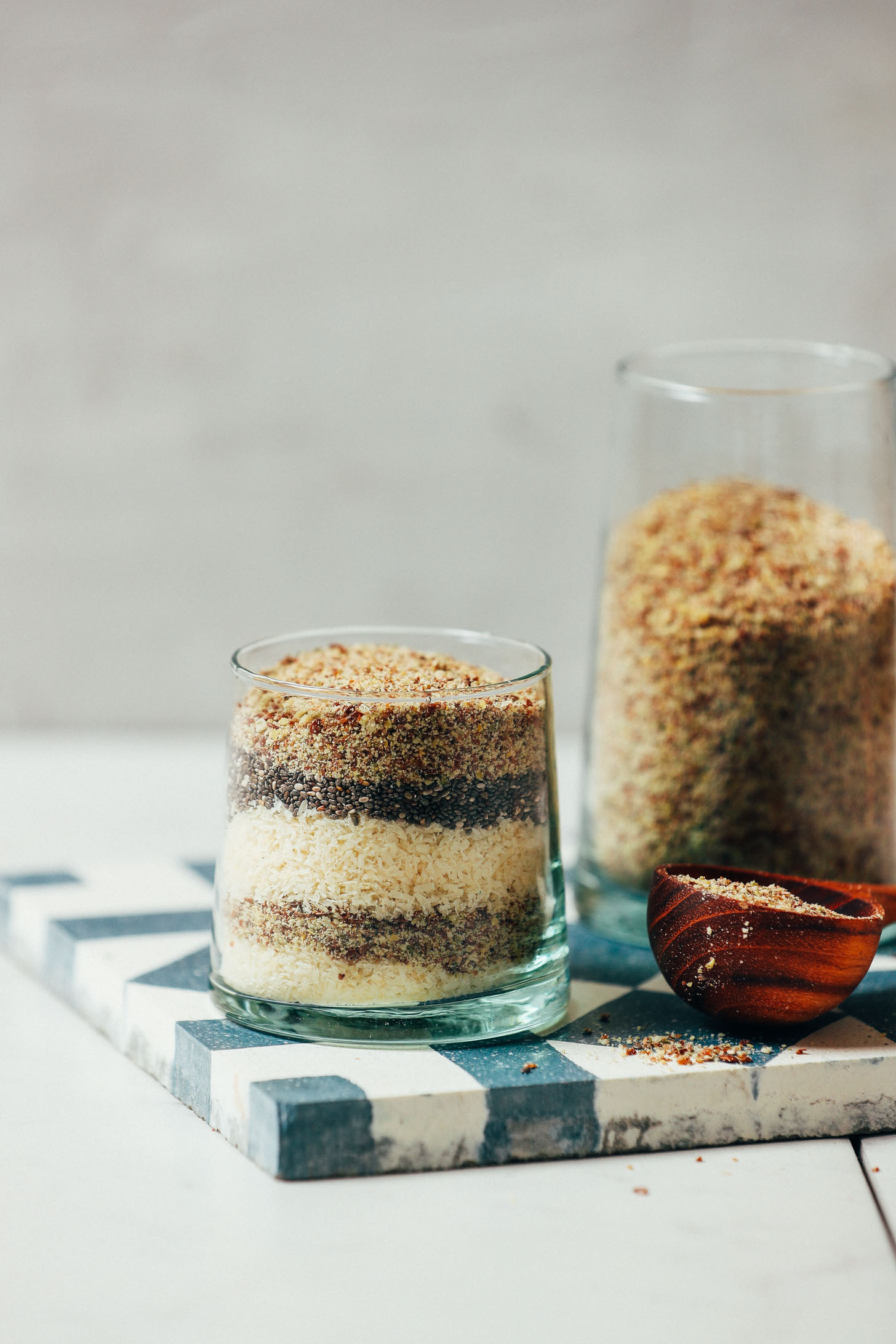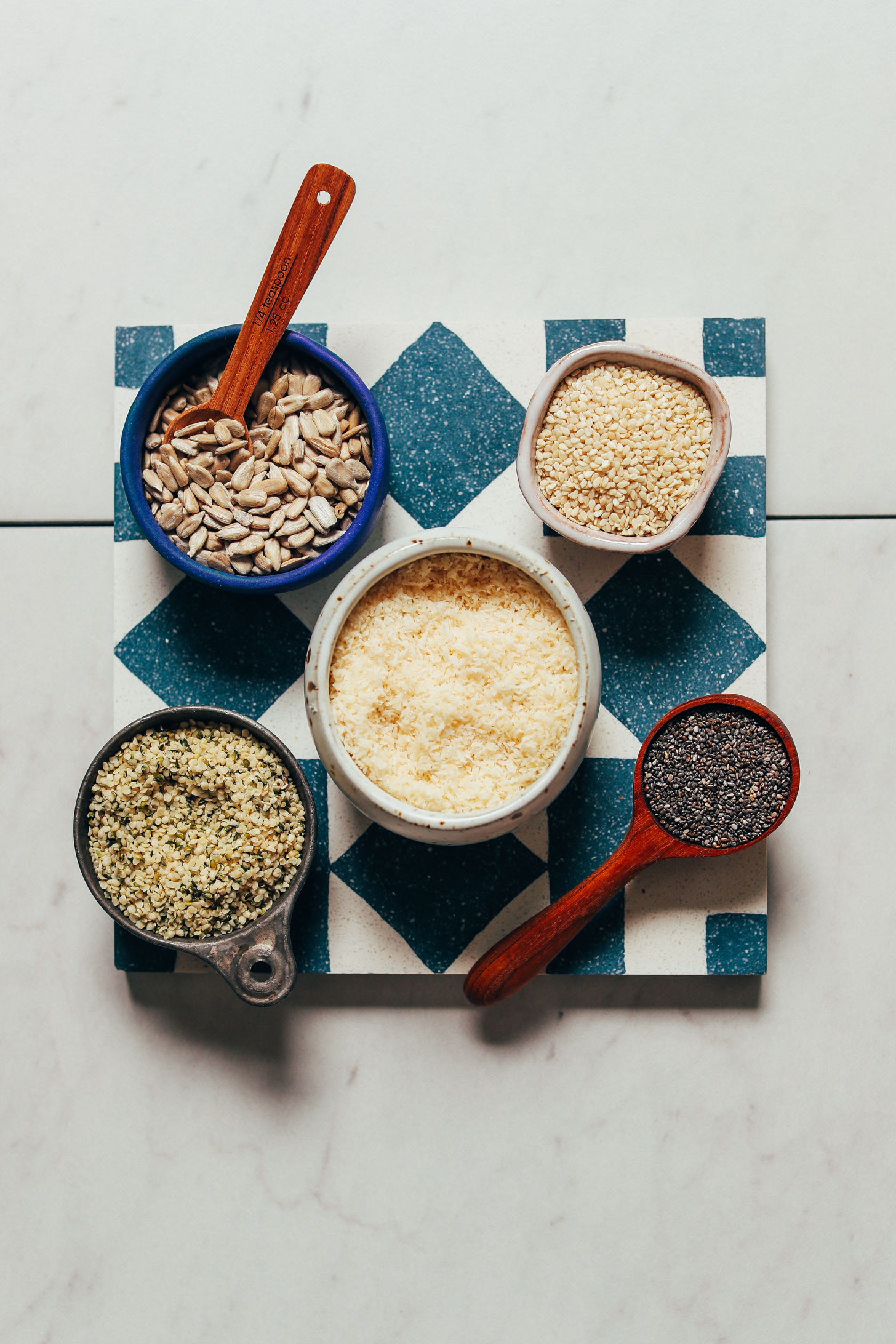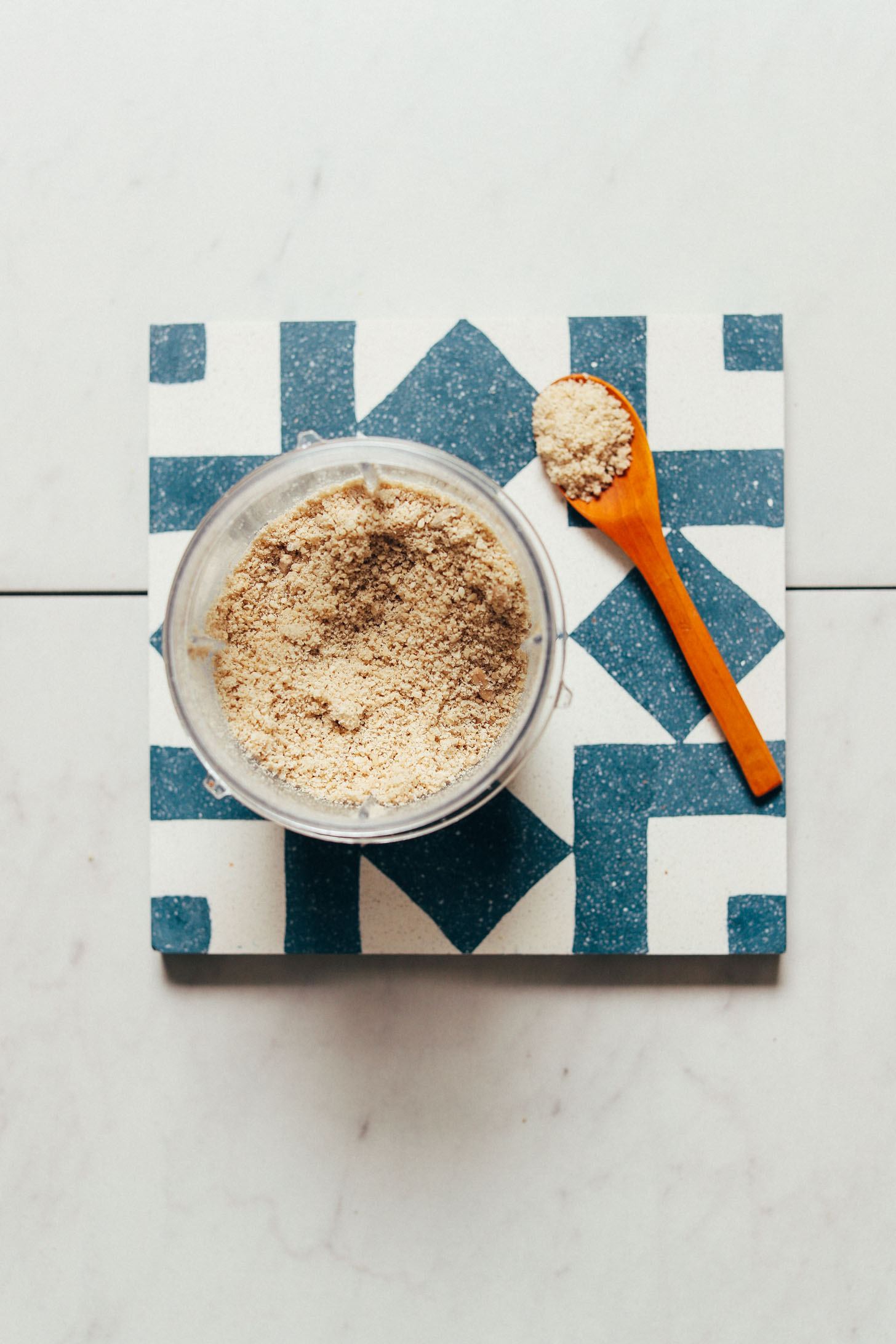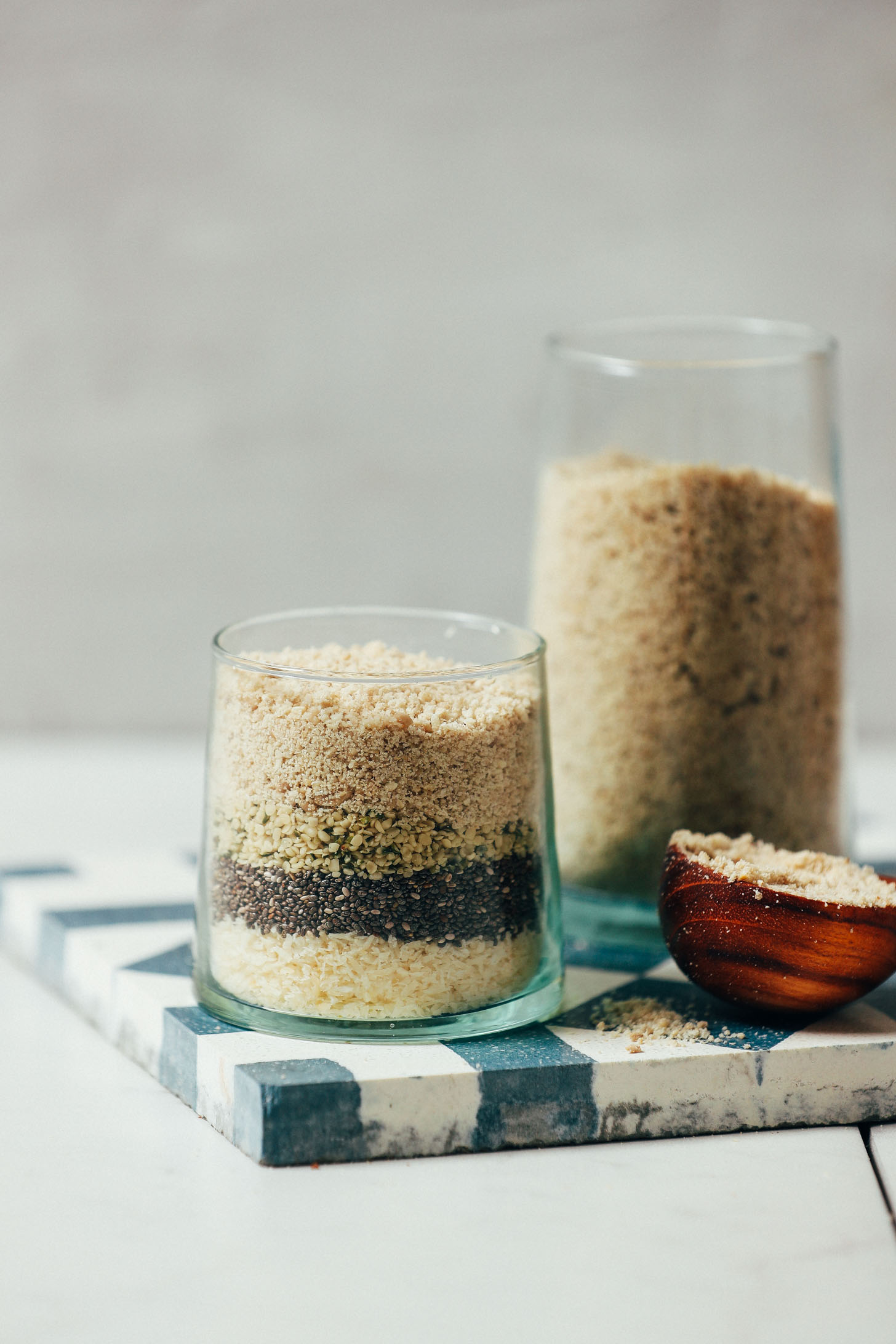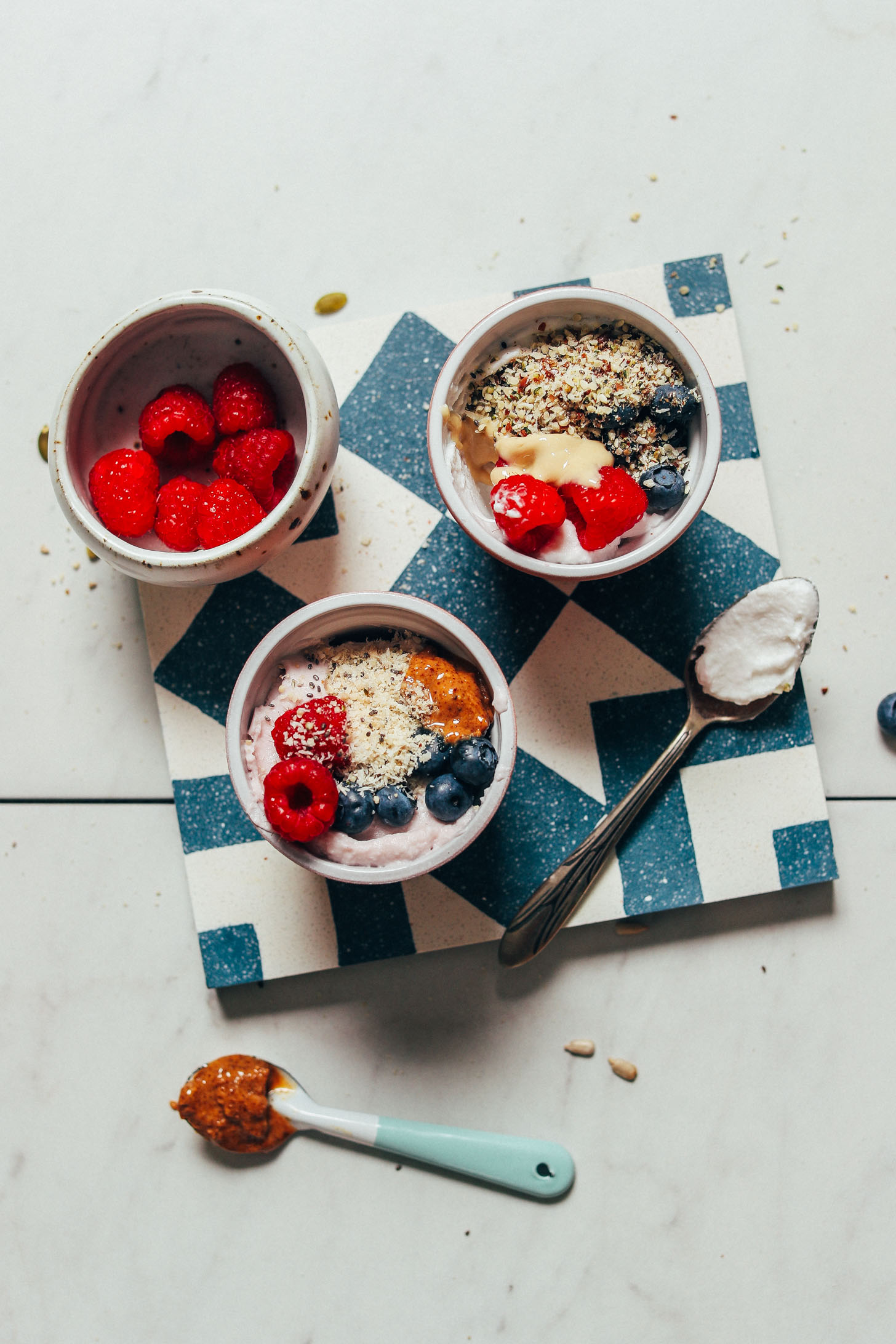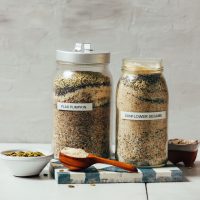I first became aware of the idea that diet affects your menstrual cycle from the book WomanCode by Alisa Vitti, which (among other wonderful, helpful things) promotes eating certain foods during certain times of your cycle to improve hormonal health. Sign me up. One simple application of this concept is seed cycling, which is essentially adding specific seeds to your diet at various times in your cycle to help optimize hormonal health. If you’re curious about seed cycling or just want a delicious seed mix (or two) to add to your pantry, you’ve come to the right place. While I’m not a health expert, I am a very curious health enthusiast who’s tried seed cycling and has some thoughts. Shall we?
What is Seed Cycling?
Seed cycling is a method of consuming certain types of seeds during certain times of your menstrual cycle in order to better support hormone health and function. (P.S. If you want to go more in-depth on the subject, I found this article by The Chalkboard Mag very helpful and informative.) For seed cycling, the menstrual cycle is split into two phases:
Phase 1 – Follicular, begins on day 1 of menstruation (generally days 1 to 14 or until ovulation begins)Phase 2 – Luteal, begins right after ovulation (days 14 to 28-35 or until day 1 of mensuration)
What Seeds to use for Seed Cycling?
Pumpkin seedsFlax seedsSesame seedsSunflower seeds
How does Seed Cycling Work?
During the Follicular Phase: Consuming seeds that contain phytoestrogens can help balance estrogen levels (an important element of overall women’s health). Because phytoestrogens are a plant-based source of estrogen, they may modify the body’s estrogen levels, helping increase and decrease estrogen levels as needed. Also, seeds (and other foods) high in omega-3 fatty acids can help reduce inflammation in the body and regulate follicle stimulating hormone, a.k.a. FSH. (1 & 2)
Pumpkin seeds and flax seeds are high in zinc and lignans, which naturally support estrogen production, help clear excess estrogen from the body, and prepare the body for progesterone secretion. (1 & 2)
During the Luteal Phase: Incorporating seeds (and other foods) that contain omega-6 fatty acids, which convert into gamma-linolenic acid, a.k.a. GLA, in the body, supports progesterone levels and reduces inflammation. (1)
Sesame seeds and sunflower seeds are high in selenium, lignans, and omega-6, which support liver function and proper hormone excretion, regulate estrogen and progesterone levels, and reduce inflammation. Also, sesame seeds are high in zinc and sunflower seeds are high in vitamin E, which both support progesterone production. (1 & 2)
How do you Seed Cycle?
Consume 1 Tbsp each flax seeds and pumpkin seeds daily during the follicular phase (days 1 to 14)Consume 1 Tbsp each sesame and sunflower seeds daily during the luteal phase (days 14 to 28-35)
What are Seed Cycling Mixes?
Seed Cycling Mixes are basically my “glow up” version of seed cycling. By simply incorporating some other exciting ingredients into the mix, like shredded coconut flakes, chia seeds, and hemp seeds, you can add even more texture, flavor, and general tastiness to the mix (not to mention more healthy fats!). I am not an expert and can’t say for certain that these mixes help further optimize your hormone health, or, on the other hand, if they dilute the efficacy of the more pure two-seed blends. But what I do know is these seed cycling mixes have made it more exciting to reach for my seeds and ultimately helped it become a more fun and sustainable way to practice seed cycling.
What’s in the Seed Cycling Mixes?
I’ve created two mixes: One for the follicular phase (days 1 to 14), and one for the luteal phase (days 14 to 18-35).
The Follicular Mix: unsweetened desiccated coconut, hemp seeds, chia seeds, pumpkin seeds, and flax seedsThe Luteal Mix: unsweetened desiccated coconut, hemp seeds, chia seeds, sunflower seeds, and sesame seeds
The base blend (inspired by this burcha recipe!) is the same in both mixes: unsweetened desiccated coconut, hemp seeds, chia seeds. I then swap out the sesame/sunflower blend and flax/pumpkin blend depending on the phase. Pictured above is the Follicular Mix (with flax and pumpkin seeds), and below is the Luteal Mix (with sesame and sunflower). Note: Because these seed mixes contain other ingredients that by volume dilute the potency of the flax/pumpkin and sesame/sunflower blends, I recommend trying to consume 2 heaping Tablespoons (or more) per day. I will say I’m not a stickler about seed cycling. Some days I consume 1 Tbsp of the seed cycle mix, while other days I consume 3 Tbsp or more. It really just depends on how I’m feeling, how hungry I am, and whether or not I’m traveling (which we’ll get to in a minute).
Seed Cycling Tips
Purchase raw organic seeds, which are higher quality, fresher, have retained more of their nutrients than roasted, and are far less likely to go rancid.Freshly grind your seeds daily if possible. But honestly, I find that to be onerous and unsustainable, so I blend my seeds once at the beginning of each phase and store them in my refrigerator or freezer.Store your seeds/seed mixes in the refrigerator or freezer to prevent oxidation, which can happen in sunlight or warm temperatures.Consume seeds raw and freshly ground. Or, in a pinch consume in other forms, such as: whole, roasted, made into a butter, or in foods like energy bites (which we’ll get to next).
How to Actually Seed Cycle: 10 Ways
So you wake up in the morning and remember, “Crap, I’m supposed to eat seeds today!” But how do you actually do it? Here are some ideas to put your seed blend/mix to use: You could also replace up to 1/4 of the chia seeds with your seed cycling mix when making chia seed pudding and call it good! The options are endless.
How to Seed Cycle While Traveling
Of course, you can bring your seed cycling mixes with you when traveling to add to oats, salads, and such. But my favorite way to seed cycle while traveling is to add the seed mixes to my 5-Ingredient Protein Balls (or you could try one of our other energy bites). They’re delicious, provide plenty of protein and healthy fats, and they’re just ridiculously tasty. Because the seed mixes already contain hemp and chia seeds, which are called for in the Protein Ball recipe, I simply replace the total amount of chia and hemp called for (heaping 3/4 cup or 155 g) with my Luteal or Follicular Cycling Mix and proceed as instructed. Depending on how many protein balls you eat a day, you may not be getting the full recommended 2 Tbsp of Seed Cycling Mix, but some is better than none in my opinion. Bottom line: Putting your seeds in protein balls basically makes seed cycling feel like dessert. Any questions?
Does Seed Cycling Work?
I can’t say for certain that seed cycling alone has improved my hormonal health, but I do know at minimum my body loves all of the healthy fats it gets from Seed Cycling Mixes. I’ve noticed the more I listen to my body and stay consistent with the routines that support my overall health — like seed cycling — the more my menstrual cycle keeps improving: getting more predictable and closer to that 28-day length with ovulation around day 14, fewer breakouts, plumper/more glowy skin, and better digestion. As with most natural healing methods, it can take time to see improvements, so stick with it for at least 2 to 3 months to allow your body to react. Know that our hormones are affected by so many other things like our environment, stress levels, sleep, toxins, activity levels, and the food we eat. Seed cycling is only one piece of the complex puzzle. Friends, I hope you found this informative and not dizzying. Feedback or questions? Had experience with seed cycling? Have tips and tricks? Let us know in the comments! And if you give these mixes a try, let us know! Tag your photos #minimalistbaker on Instagram. We’d love to see what creative uses you come up with. Cheers, friends!
